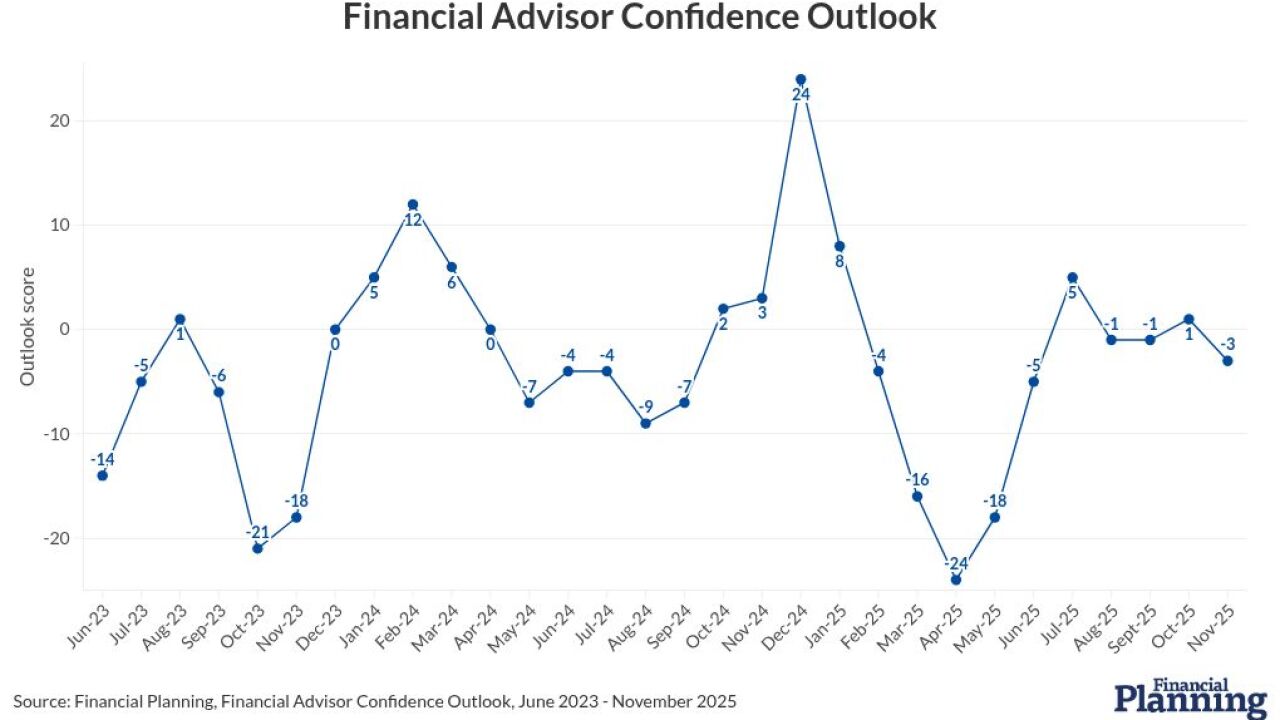Financial advisors, tax professionals and their clients who inherited individual retirement accounts in this year or the previous three received 12 more months of flexibility from the IRS.
In
READ MORE:
For planners and clients seeking to reduce potential estate taxes and RMD headaches down the line, that extra year of relief also creates an opportunity to consider trust strategies that could address both issues at once, according to Laufer and Theresa de Leon, the national director of sales for
The notice represents "the final regulations" that "will apply for purposes of determining RMDs for calendar years beginning on or after Jan. 1, 2025," the IRS said in the notice itself. In the meantime, heirs and their tax professionals can think through the potential timing and bracket impact of inheriting the assets amid the potential sunsetting of
"If they're currently in a low tax bracket but anticipate moving to a higher one later, it might make sense to capture taxable income in the lower bracket year," he said. "Let's not forget that the IRA must distribute all its assets within the 10-year period. By deferring distributions, subsequent year distributions may be larger and push individuals into a higher tax bracket."
Since "retirement accounts are always an important part of planning" for an estate transfer, placing the IRA in a trust could be "the easiest and simplest way" for an owner to lessen the taxes and RMDs for heirs in the future, de Leon noted in an interview.
"You never want to go to a client with the answer before you ask all of the questions — that's kind of the mantra that I live by. You have to take the step back and understand your client and what your client's objectives are," she said. "You can really get some of the trusts out of the estate, so that you don't have that first bite of the apple of the estate tax."
READ MORE:
The wording in the IRS notice that the Secure Act rules "will apply" on or after the beginning of 2025 displays a notable difference with the ones bringing that relief in prior years by stating that the RMDs would have to begin "no earlier than the subsequent" year, certified public accountant Ed Zollars wrote on Kaplan Financial Education's "
"Such omissions have historically left the applicability of penalties in the following year ambiguous, with the IRS not specifying its expectations regarding the enforcement of these rules for distributions in that year," Zollars wrote. "And, in fact, such penalties have not applied in those subsequent years. Instead, the current notice indicates that the final regulations are projected to be applicable for determining required minimum distributions for calendar years starting from January 1, 2025. Consequently, it is prudent for taxpayers to operate under the assumption that distributions are likely to be mandated for the tax year 2025 and beyond."
In light of the eventual implementation of the 10-year distribution rules, IRA owners and their tax professionals could set up a charitable remainder trust (CRT) to be the beneficiary, Laufer said. That strategy comes with its own guidelines, such as restricting the annual payouts to heirs to between 5% and 50% of the trust's value and other specific qualifications, he noted.
"A CRT is a tax-exempt entity that can distribute an annuity based on a percentage of the annual fair-market value of the trust assets," Laufer said. "The beneficiary of the CRT would retain the right to receive an annuity expressed as a percentage of the annual fair-market value of the trust's assets. This annual annuity can be paid to individual beneficiaries for life or for a term up to 20 years. At the end of the CRT term any remaining trust property will pass to the designated qualified charitable beneficiaries."
READ MORE:
The many family dynamics involved with estate planning often bring other factors into the mix around a decision about placing the assets in a trust, de Leon noted. Those may include the relative financial sophistication and well-being of one heir as compared to another, protecting assets in the event of a divorce or even concerns about substance abuse problems, she said.
"It's really those kinds of issues — those emotional issues — that tend to lead people to trusts," she said. "Those tend to be more the rationale for people these days. More of my conversations are about that than the tax consequences, frankly."





